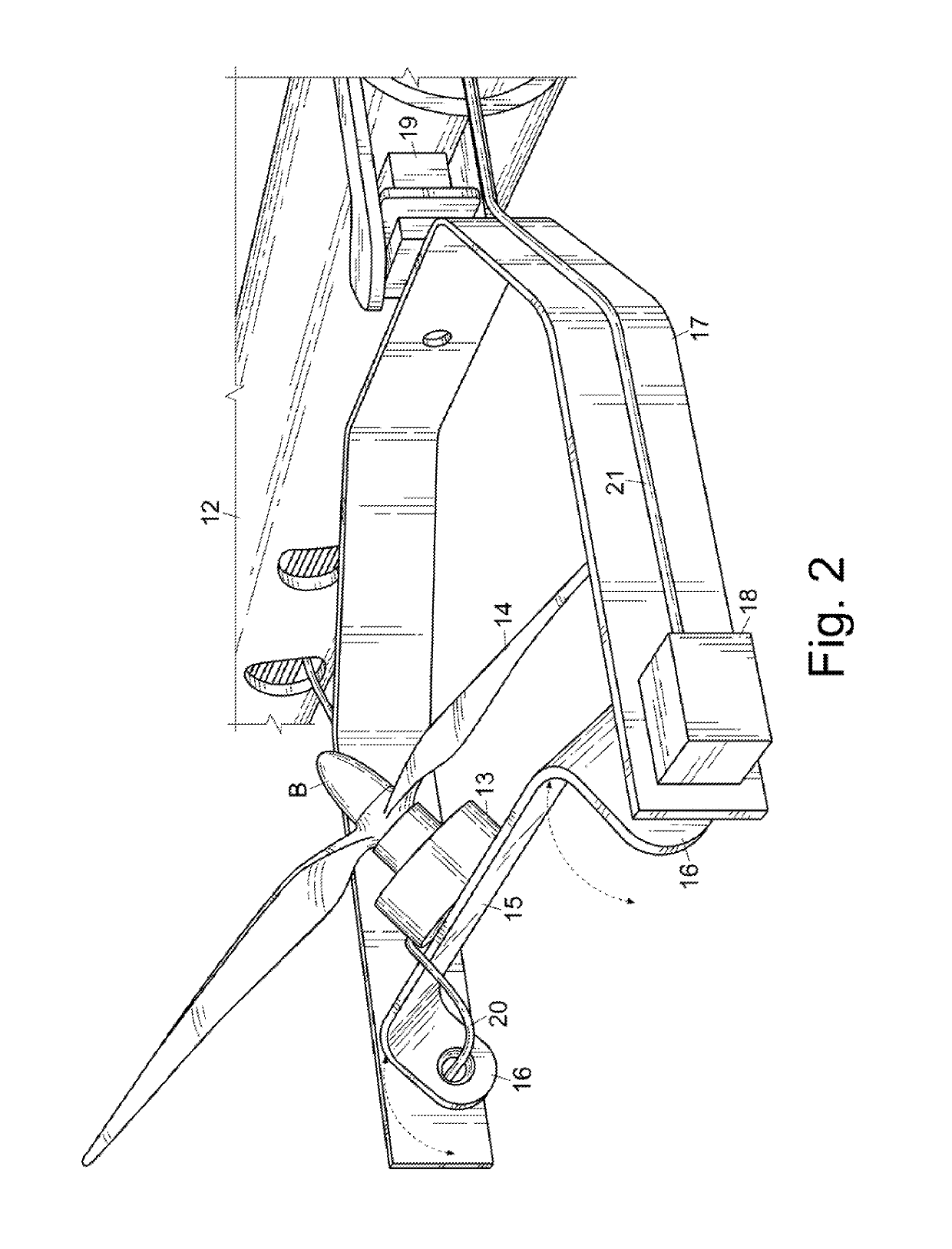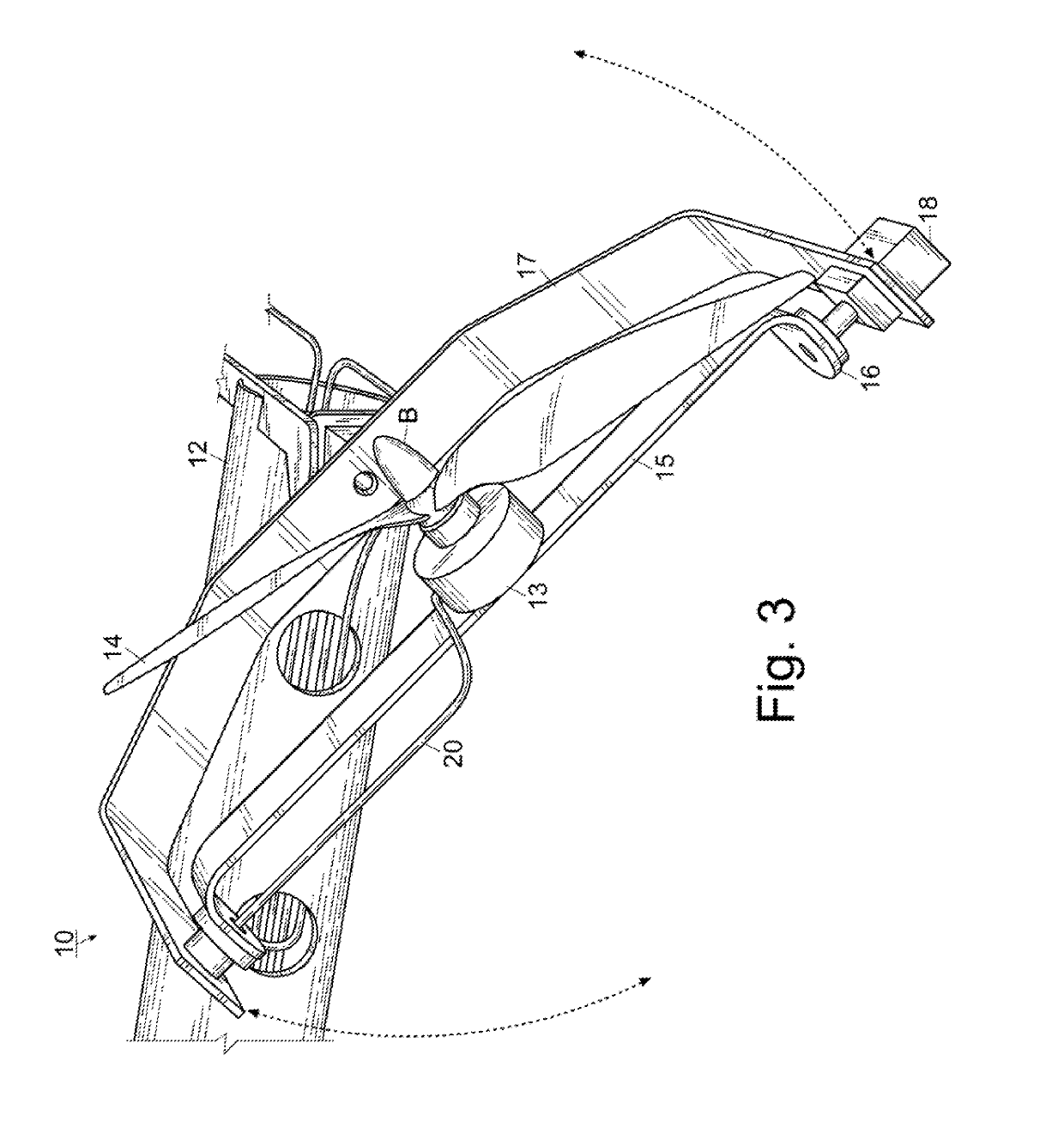Vertical takeoff and landing vehicle
a vertical takeoff and landing technology, applied in the field of air systems, can solve the problems of reducing the lift of the aircraft, reducing the flight performance of the craft, and presenting the same danger of losing lift as tilt-rotor aircra
- Summary
- Abstract
- Description
- Claims
- Application Information
AI Technical Summary
Benefits of technology
Problems solved by technology
Method used
Image
Examples
Embodiment Construction
[0030]For a better understanding of the invention and its operation, turning now to the drawings, FIGS. 1-3 show preferred aircraft 10 with a plurality of propulsion systems 11 positioned about the outboard periphery of airframe 12. Preferred propulsion system 11 is a ducted fan oriented with the openings perpendicular to the horizon (not shown), directing thrust along a vertical vector, but other propulsion members such as jet turbines, ducted fans with an end closed, pulse detonation engines, a-typical gear turbine engines, electrostatic ion thrusters, conventional propellers (as illustrated in FIGS. 1-3 for clarity and ease of demonstration), Sonic Blue electric S-MAGJET engines, Boeing PETA pulse jets, Pratt & Whitney PURE POWER P1000G engines, or the like may also be utilized in a similar manner. Regardless of the specific propulsion system 11, one or more propulsion systems 11 are mounted to airframe 12 and preferably two or more propulsion systems 11 for performance and redun...
PUM
 Login to View More
Login to View More Abstract
Description
Claims
Application Information
 Login to View More
Login to View More - R&D
- Intellectual Property
- Life Sciences
- Materials
- Tech Scout
- Unparalleled Data Quality
- Higher Quality Content
- 60% Fewer Hallucinations
Browse by: Latest US Patents, China's latest patents, Technical Efficacy Thesaurus, Application Domain, Technology Topic, Popular Technical Reports.
© 2025 PatSnap. All rights reserved.Legal|Privacy policy|Modern Slavery Act Transparency Statement|Sitemap|About US| Contact US: help@patsnap.com



